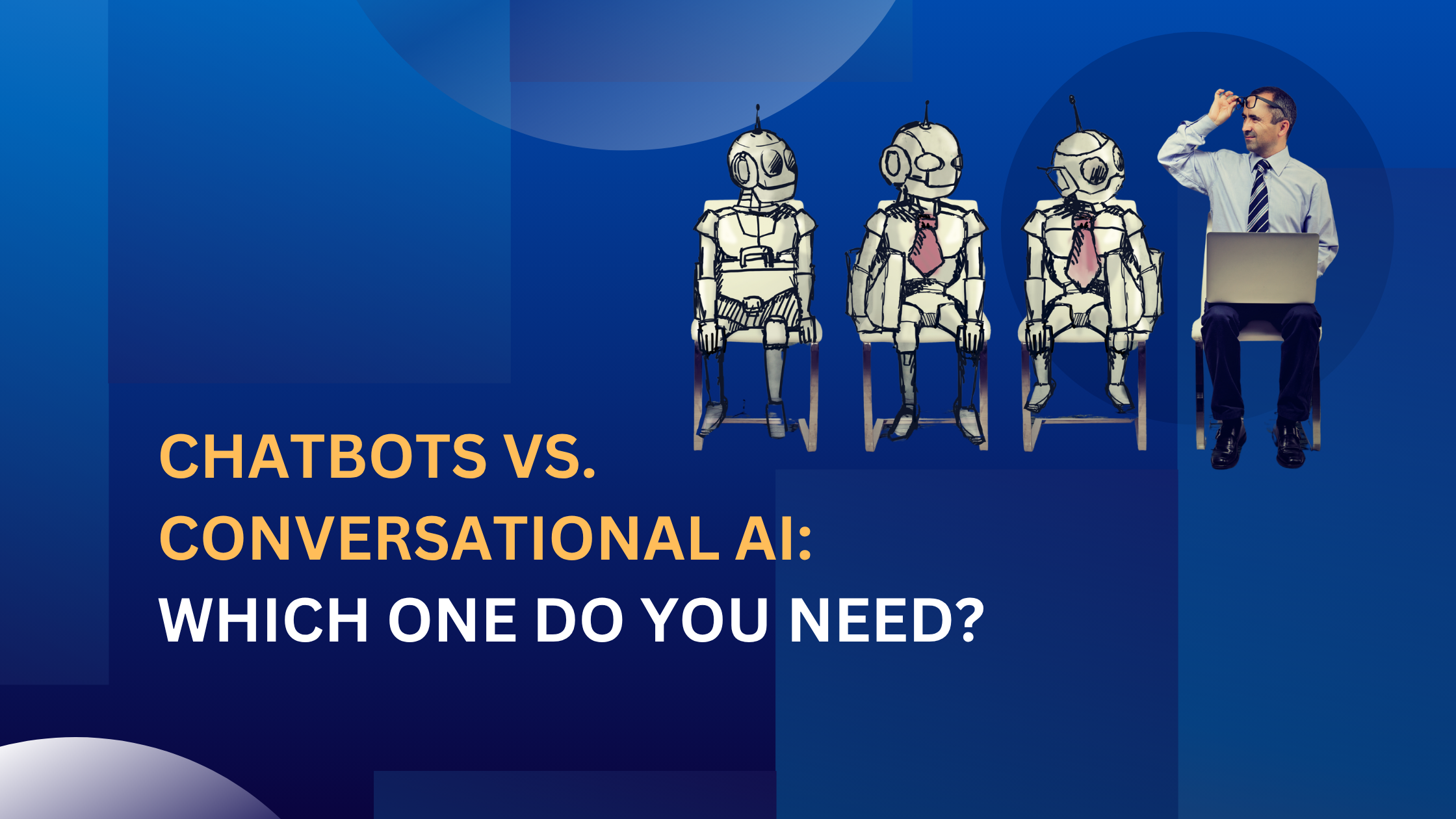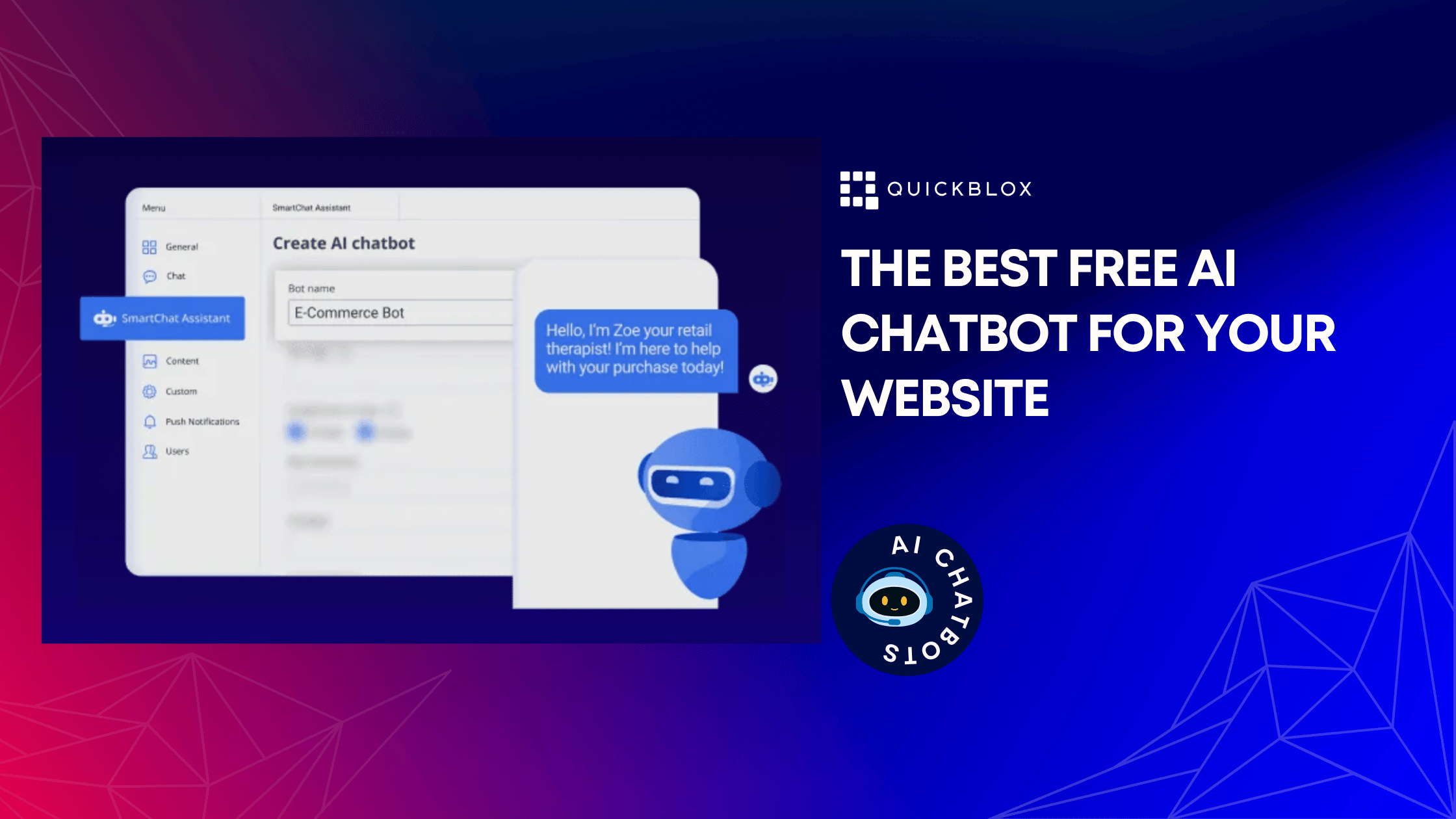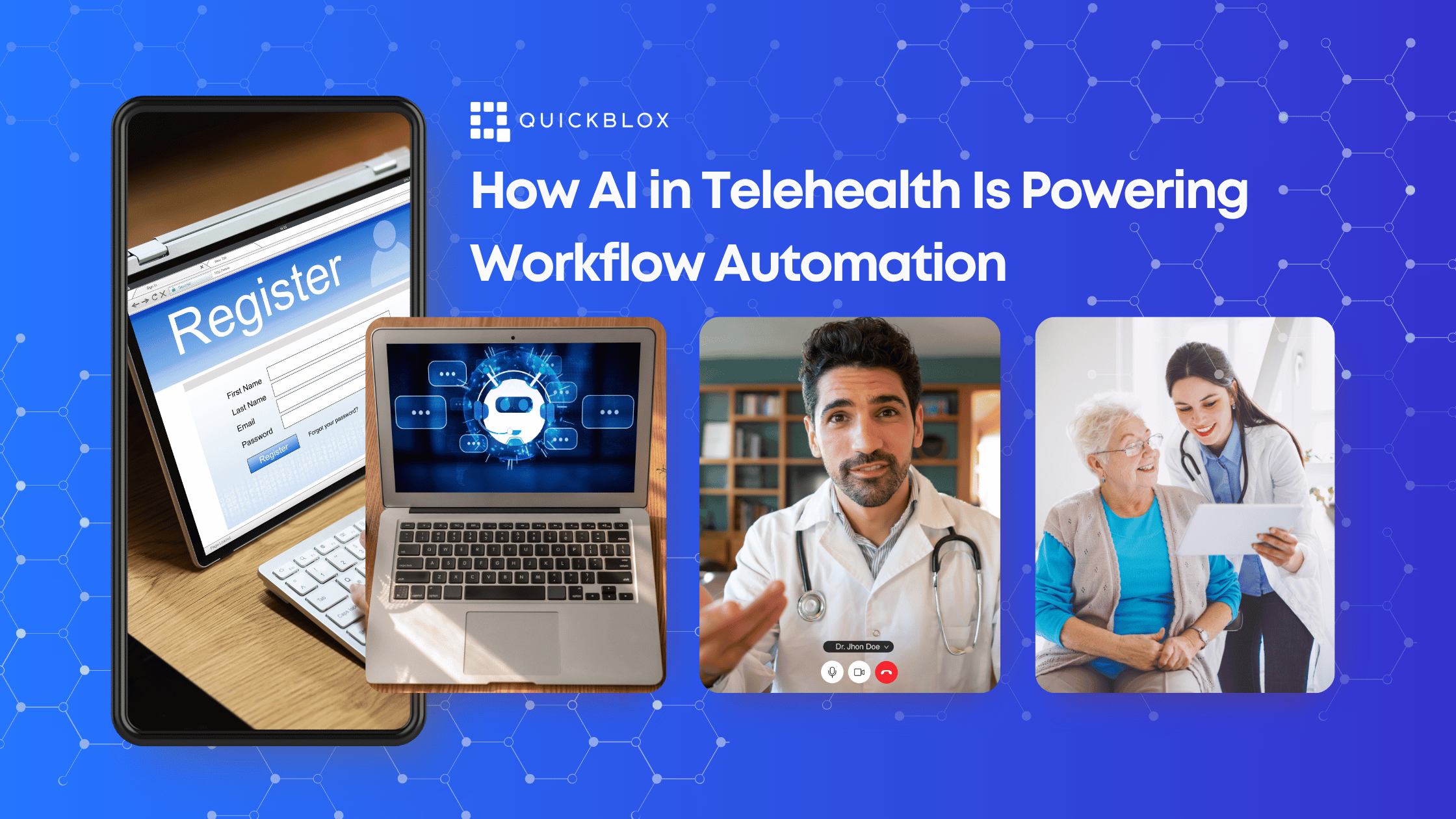
Summary: This article breaks down the differences between traditional chatbots and conversational AI, helping readers understand which solution best fits their needs. It explains core capabilities, real-world use cases, and how to choose the right tools based on complexity, scalability, and user expectations. Whether you’re building a simple FAQ bot or a dynamic AI assistant, this guide will help you make an informed decision.
Table of Contents
Introduction
People often talk about chatbots and conversational AI like they’re the same thing.
They’re not.
Sure, both help automate chats—but they work in very different ways. One sticks to a set of pre-written responses. The other can actually understand what someone’s saying, keep track of the conversation, and respond in a way that feels more natural.
So, which one do you need?
That depends on what you’re trying to do. Maybe you just want something simple to answer common questions. Or maybe you’re after something smarter—something that can handle more complex conversations without relying on a script.
In this post, we’ll look at what sets these tools apart, how they’re connected, and how to figure out which one makes the most sense for your business or project. Whether you’re new to all this or just looking to upgrade what you’ve already got, this guide will help you make the right call.
Foundations: Understanding the Terminology
What Is a Chatbot?
Imagine walking into a store and asking a question at the front desk. The person there has a script—they know what to say if you ask about opening hours, return policies, or where to find the bathroom. But if you go off-script? They freeze. That’s basically how a traditional chatbot works.
A chatbot is a tool that helps people get quick answers to common questions. It follows a set of predefined rules—things like “if someone asks this, reply with that.” You’ve probably seen them pop up on websites offering help with orders or answering FAQs. They’re fast and always available, but they only work well if the conversation stays within expected boundaries.
If you phrase something in a way the bot doesn’t recognize, it’ll either give a generic response or loop back to a main menu. Frustrating, sure—but also predictable. And in some cases, that’s exactly what a business needs: simple, efficient, low-maintenance automation for repetitive tasks.
Of course, not all chatbots are this basic anymore—but we’ll get to that in a second.
What Is Conversational AI?
Now think about chatting with someone who doesn’t just follow a script—but actually gets what you’re saying. Even if you word it awkwardly, they pick up on your meaning, ask questions back, and keep the conversation moving. That’s what conversational AI is built to do.
It’s not just one tool—it’s more like a whole system that helps software understand natural language. That includes voice assistants like Alexa, smart agents that pop up on websites, and some of the more advanced chatbots you’ve probably come across. Basically, it’s what gives those bots the ability to understand intent, not just words.
One big difference between this and a regular chatbot? Flexibility. A basic bot usually looks for specific phrases. If you don’t say those exact words, it might freeze or send you back to the beginning. But with conversational AI, the bot can figure out what you meant—even if you phrased it differently than expected.
It can also do more. Like remembering what you said earlier in the chat. Or changing its answer based on context. It feels less robotic because, in a way, it is.
How Chatbots Relate to Conversational AI
This is where a lot of people get tripped up—because the terms are often used interchangeably. But here’s the real story:
Chatbots are just one kind of tool. Conversational AI is the bigger engine that can power that tool—and a few others, too.
Some chatbots are really simple. They follow rules and scripts, and that’s it. Others are more advanced and can understand context, handle follow-ups, and respond like a real person would. Those smarter bots are the ones that use conversational AI under the hood.
So technically, all conversational AI chatbots are still chatbots. But not every chatbot is powered by conversational AI. It’s kind of like comparing calculators to smartphones—they can both do math, but one has a whole lot more going on.
You’ll also find conversational AI being used outside of chat—like in voice assistants, smart IVRs, and virtual agents. The key idea is that it’s not the interface that makes it “conversational AI”—it’s the ability to understand and respond in a more natural, flexible way.
Clearing Up the Confusion: Common Misconceptions
Because chatbot and conversational AI get thrown around so loosely, it’s easy to assume they’re the same thing. They’re not—and there are a few myths that keep that confusion going. Let’s clear some of them up.
“All chatbots use AI.”
Nope. A lot of them don’t. Many are just decision trees with buttons or keyword triggers. They do their job—but there’s no “intelligence” behind the scenes. If you ask something unexpected, the conversation hits a wall. That’s not AI—it’s automation, and it’s pretty limited.
“If you have conversational AI, you don’t need human support.”
Not really. Even the best AI tools still hit edge cases or questions they’re not trained for. Conversational AI can reduce how often users need a human, but it shouldn’t replace that option altogether—especially in industries like healthcare, finance, or law where accuracy really matters.
“Rule-based bots are outdated.”
Not true. Sometimes, simple is best. If your goal is to answer a few basic questions or route people to the right place, a rule-based chatbot works just fine—and it’s often faster and cheaper to launch.
“You need a massive tech team to build conversational AI.”
That used to be the case. But now there are tools—like QuickBlox’s no-code chatbot dashboard—that let non-technical teams build smart, AI-powered chat experiences without writing a single line of code. If you’ve got a clear use case and a little time, you’re good to go.
Choosing the Right Solution for Your Business
So now that we’ve cleared up what these tools are—and aren’t—let’s talk about how they’re actually used out in the world. And more importantly, how to figure out which one makes sense for you.
Where Conversational AI Really Shines
Some situations call for more than just pre-written replies. Here are a few examples where conversational AI is making a real difference:
Healthcare: AI-powered chatbots help patients check symptoms, complete digital intake forms, and get routed to the right specialist—without waiting on hold. They’re also smart enough to hand off to a human if something seems serious.
Learn more about – AI Medical Chatbots: Revolutionizing Patient Care in Healthcare
Retail & Ecommerce: From helping customers find the right size to tracking orders, AI chatbots can handle real-time questions, even if they’re phrased differently each time. They also remember what you asked about earlier, which helps keep the experience smooth.
Banking & Finance: Conversational AI assistants can guide people through things like applying for loans, managing accounts, or understanding fees—way beyond what a button-based chatbot could handle.
Learn more about – The Role of Conversational AI Chatbots in Transforming Financial Services
Education & Online Learning: Virtual assistants help students stay on track with class schedules, deadlines, and even personalized study tips. It’s more like a helpful guide than a Q&A robot.
Chatbots vs. Conversational AI: A Quick Comparison
Here’s a simple way to look at how the two stack up:

You’ve Chosen a Chatbot – now what?
Okay, so you’ve decided whether you want a basic chatbot or something more intelligent. Now comes the next step—how are you going to build it?
There’s no single “right” way to do this. It all depends on how complex your needs are, how much tech help you’ve got, and how quickly you want to get something live. Here are the three main options most businesses end up choosing between.
1. No-Code Chatbot Builders
These are the tools that let you build a bot without writing any code. You usually get a drag-and-drop interface, some templates, and a few pre-set conversation flows to choose from. Super beginner-friendly.
They’re great when you just need something simple—maybe a bot that can answer FAQs, collect email addresses, or book appointments. But they do have limits. If the conversation gets too complicated, the bot won’t really know what to do.
Go this route if you…
- Want to launch quickly
- Don’t have developers on hand
- Only need basic features
Examples you might’ve heard of: Tidio, Landbot, Intercom
2. Custom Chatbot Frameworks
This is the DIY option—for people with a bit of technical experience. You get the tools to build something more advanced, but it takes time and know-how.
These frameworks let you create chatbots that understand natural language, learn over time, and plug into your systems. You can design custom flows, train your bot on real conversations, and go way beyond the basics.
Makes sense if you…
- Have a dev team or are pretty technical yourself
- Need to support complex interactions
- Want full control over how your chatbot behaves
Popular picks: Rasa (open-source), Dialogflow (by Google)
3. All-in-One Platforms (like QuickBlox)
This option is kind of the best of both worlds. Platforms like QuickBlox give you chat, video, and messaging tools—plus a no-code dashboard to help you build AI-powered chatbots without starting from scratch.
They’re a solid pick if you need something more secure, customizable, or scalable. And if you’re in a field like healthcare or finance, the compliance features (like HIPAA support) make a big difference.
Choose this if you…
- Need something flexible but don’t want to code everything
- Care about things like privacy and secure hosting
- Want AI chatbots and other communication tools in one place

What’s Next for Chatbots and Conversational AI?
It’s safe to say we’re past the novelty phase. Chatbots aren’t just fun little pop-ups anymore—and conversational AI isn’t just for big tech companies. Things are moving fast, and what we’re seeing now is just the beginning.
Smarter Conversations Are Becoming the Norm
People don’t just want quick answers anymore—they want conversations that feel smooth and personal. That’s pushing businesses to go beyond scripted bots and start using AI that can actually understand what customers mean, even when they don’t say it perfectly.
Soon, it won’t be enough for a chatbot to just respond—it’ll need to keep up, adjust its tone, and remember who it’s talking to. That kind of experience is already happening in some industries and is quickly becoming the expectation.
Learn more about – Top 10 Advantages of AI-Powered Chatbots for Businesses
Hybrid Models Are Gaining Ground
We’re also seeing more of a mix—bots that start simple, but have AI features layered in over time. Businesses might launch with a rule-based chatbot to get going, then add natural language processing or memory features once they’re ready.
It’s not all-or-nothing anymore. You can start small and get smarter as you go.
Security and Privacy Are Taking Center Stage
As AI gets more powerful, the need to protect user data is growing too. For industries like healthcare or banking, using platforms that offer secure hosting and compliance (like HIPAA or GDPR) is already a must—and that focus is only going to get stronger.
Expect more businesses to look for chatbot solutions that combine intelligence and control over where and how data is stored.
Building AI Will Get Easier for Non-Developers
This is a big one. Until recently, building AI-powered anything meant needing a team of engineers. Now, platforms are popping up that let you build smart bots—even conversational ones—without touching code. And they’re only getting better.
That shift opens the door for more teams—marketers, product managers, even customer service folks—to create and manage bots on their own terms.
In short? Chatbots are evolving. Fast. The future is less about picking between “simple” or “smart” and more about building something that works for you—and grows as your business does.
Final Takeaways: Make the Right Choice—Then Build It Right
So, here’s the bottom line: whether you need a simple rule-based chatbot or a smarter assistant powered by conversational AI, the key is choosing what works best for your users, your team, and your goals.
You don’t need to overcomplicate things.
Start small if that’s what makes sense.
Scale when you’re ready.
And if you’re looking for a way to build intelligent, secure chatbots—without needing a team of developers—QuickBlox can help. With our no-code dashboard, AI-powered features, and HIPAA-ready platform, we make it easy to create smart chat experiences your users will actually enjoy.
Want to see it in action? Book a free demo or start building today.
Talk to a sales expert
Learn more about our products and get your questions answered.
Contact sales
FAQs: Chatbots and Conversational AI, Explained
What is a conversational AI platform, really?
It’s basically the toolkit behind smart bots. A conversational AI platform gives you the ability to build chatbots that aren’t stuck following scripts. Instead, they can understand what people are trying to say and keep the chat going. Some platforms are more complex, others are super user-friendly—you don’t always need a developer to get started.
Can you give me an example of conversational AI?
Sure. Think about the chat assistants you find on banking apps or telehealth platforms. The good ones don’t just spit out answers—they ask questions back, pick up on your intent, and remember context. That’s a solid example of an AI conversational chatbot doing its job well.
So how is an AI chatbot different from a regular chatbot?
A regular chatbot just follows rules—it reacts to what you type in based on exact matches or buttons. But an AI chatbot, or more specifically an AI conversational chatbot, does more than that. It tries to understand what you mean, even if you say it in your own words. It can ask follow-ups, keep track of what you said earlier, and change how it responds depending on the conversation.
Are all chatbots using conversational AI?
Nope. A lot of bots out there still run on simple decision trees—they’re fast but not all that smart. Only some chatbots are powered by AI. So while every AI chatbot is still a chatbot, not every chatbot is using conversational AI. That’s a key difference.
Can I build one of these bots if I don’t know how to code?
Actually, yes. There are platforms that make it pretty straightforward. For example, QuickBlox lets you build an AI chatbot using a no-code dashboard. You can set up your chatbot’s flow, customize responses, and add AI features—all without touching any code.
Do I need an AI chatbot for my business?
Maybe. If you’re just answering basic questions—like store hours or password resets—you might not need AI. But if you want your bot to guide users through more complex stuff, or make the conversation feel more natural, then it’s probably worth exploring a conversational AI platform. It really comes down to the kind of experience you want your users to have.
What’s the best AI conversational chatbot to use?
That depends on what industry you’re in and how much control you want. Some tools are great for simple bots, while others offer secure hosting and more advanced features. If you’re in a field like healthcare or finance, something like QuickBlox is worth checking out. It’s flexible and secure, and many folks say it’s one of the best AI conversational chatbot platforms for regulated industries.
Is it safe to use conversational AI in industries like healthcare?
Yes—but only if the platform takes security seriously. Look for providers that offer encryption, secure data storage, and compliance with standards like HIPAA. Not every AI chatbot platform does this, so it’s something to double-check before you commit.










